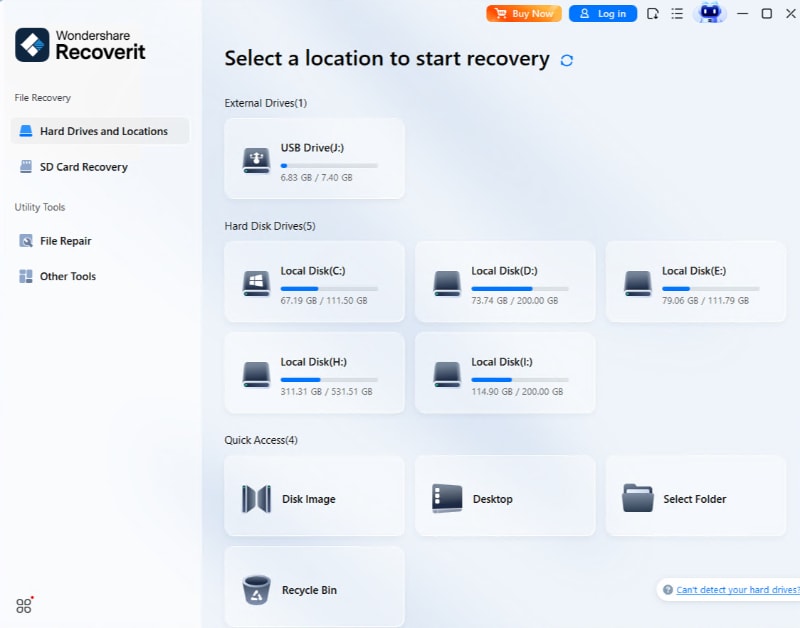How to Fix Computer can’t Connect to WiFi
Some Windows 10 users have been having a tough time warding off the bugs and errors after their upgrade. When the computer can't connect to WiFi, it can become frustrating because it will affect some daily work. However, using some simple troubleshooting techniques can solve this problem. WiFi is to use the internet connection through a wireless medium and is the most preferred method to avail internet services when one is in a public place. WiFi requires you to have the driver installed, and today, more or less, every laptop device comes with the functionality of WiFi. So, how to fix the computer if it can't connect to WiFi? In this article, we will address the issue from the perspective of Windows 10 users.
Windows 10 can't connect to WiFi:
Firstly, we shall make an effort to address the basic errors behind Windows 10 not being able to offer any internet connectivity. When we got in touch with experts at Microsoft, we learned that the problem of the VPN connections present on the computer that was upgraded to Windows 10 was persisting. This was due to the upgrade that was made during active VPN software to Windows 10. However, the problem isn't restricted to software programs but also goes out to hardware which might be incompatible with Windows 10 and thus users can't connect to WiFi.

We need to ensure that the WiFi is set to on. To check this, we open Settings>Network & Internet> WiFi and move the slider over the "˜On' position. However, please make sure that the physical WiFi button on the keyboard is not turned off.
One can take this alternate route too in which you have to right-click on the Start button and open the WinX menu. You can now select the device manager. Clicking on Action Tab and selecting "˜Scan for Hardware changes' would refresh the list.

By the way, you can learn more tips to fix Windows can't connect to Internet issues.
WiFi not available in the list of Networks after Windows 10 Upgrade:
For the ones who weren't using VPN software during their upgrade to Windows 10, the issue could lie with the router. One has to check if the router is broadcasting the SSID, and this can be done by performing the following steps:
- Start by typing 192.168.1.1 in the address bar of your browser. This is done to connect to your router.
- Below the wireless section of the configuration settings, check for an SSID, and also if the "˜Broadcast SSID' is checked; the wordings "˜broadcast SSID' could vary from different router models and therefore you must look for alternative labels in case you do not find "˜Broadcast SSID' in the wireless section of the configuration page.
- One can also change the SSID to something else and click "˜Save' to ensure that the SSID is being displayed in the list of networks that are being showcased when one clicks on the network icon in the Windows 10 System Tray.
- The removal of a VPN virtual card would be necessary using the Windows Registry Editor if can't connect to WiFi and if you are using VPN software while upgrading to Windows 10.
How can I remove VPN using the Windows Command Prompt?
- Press the Windows Key + R to bring up the Run dialog.
- CMD has to be typed in the Run dialog and then press Enter.
- After the command prompt window appears, you are to type or copy-paste the following command and follow it up by pressing Enter:
reg delete HKCRCLSID{988248f3-a1ad-49bf-9170-676cbbc36ba3} /va /f
- Now you must copy-paste or type the following command and press on Enter
netcfg -v -u dni_dne
- All you have to do is restart the PC and check for the WiFi under the list of Network Settings in Windows 10 and if you can't connect to the internet, we have listed a few more steps below.
Can't Connect to WiFi because Internet Connection Password is Incorrect:
Are you typing the right password for your WiFi? Turns out, many users miss out on this basic step while troubleshooting their networking connections when they face the issue where they can't connect to the internet. Here is how you can resolve the issue:
- Right-click on the WiFi or network icon.
- Select Open Network and Sharing Center.
- You have to click on "˜change' on Adapter Settings.
- The Network Properties Window would appear where you have to right-click on the WiFi connection and click on Status.
- In the dialog box that would then appear, click on "˜Wireless Properties'.
- Click on "˜Security Tab' in the Wireless Properties windows.
- Below the Wireless Security Key Label, one can find the "˜Show Characters' checkbox. You can click on it to see the Wireless Password.
- You can check the password and then use it to connect to the WiFi.
- If this still doesn't help, you can change the password in the Router Configuration Page.
How can I change the Password?
- Type 192.168.1.1. In the address bar of your browser. This is to establish a connection with your router.
- Locate the SSID option under the Wireless option.
- Check for the option saying "˜Password' or any alternate phrase depending upon the router being used.
- Click on Save and close the browser. Reboot and you can connect the Internet using your WiFi connection.
Conclusion:
When one can't connect to WiFi, it can be very difficult to get the job done, and therefore, there is a need for a proper mechanism in place that can help you resolve the errors related to your WiFi. However, if you are still unable to resolve the error, you should connect with your router manufacturer, as there might be some error with the router or Ethernet connection. WiFi troubleshooting is not that difficult as one can employ the Windows troubleshooter to do the job as well. Saying that, it would only assist you in detecting the problem, and not fix the problem if it happens to be extensive in nature, and thus, you should look to choose one of the methods listed above. If you have discovered an alternate way to fix the issue when one can't connect to WiFi, let us know in the comments section.
- Recover lost or deleted files, photos, audio, music, emails from any storage device effectively, safely and completely.
- Supports data recovery from recycle bin, hard drive, memory card, flash drive, digital camera, and camcorders.
- Supports to recover data for sudden deletion, formatting, hard drive corruption, virus attack, system crash under different situations.
Computer Data Recovery
- Windows PE
- System problems
- PC Errors





 ChatGPT
ChatGPT
 Perplexity
Perplexity
 Google AI Mode
Google AI Mode
 Grok
Grok
























David Darlington
staff Editor